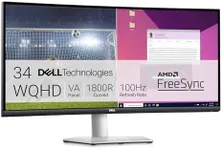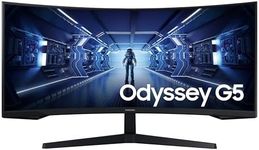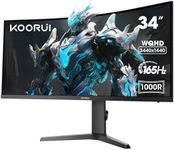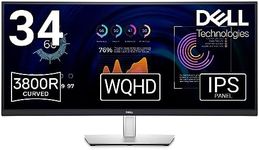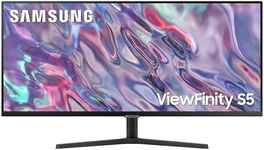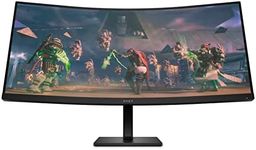Buying Guide for the Best Ultrawide Monitor For Macbook
Choosing an ultrawide monitor for your MacBook can significantly enhance your productivity and multimedia experience. Ultrawide monitors offer a broader field of view, which is particularly beneficial for multitasking, video editing, and gaming. When selecting the right monitor, consider how you plan to use it, as this will guide you in choosing the specifications that best meet your needs. It's important to ensure compatibility with your MacBook, so check for connectivity options and resolution support. Here are some key specifications to consider when choosing an ultrawide monitor.Screen SizeScreen size refers to the diagonal measurement of the monitor's display area. It's important because it determines how much screen real estate you have for your tasks. Ultrawide monitors typically range from 29 inches to 49 inches. Smaller sizes (29-34 inches) are suitable for general productivity and office work, while larger sizes (35-49 inches) are ideal for creative professionals who need more space for editing or design work. Consider how much desk space you have and how much screen space you need for your tasks when choosing the size.
ResolutionResolution indicates the number of pixels on the screen, affecting the clarity and detail of the display. Common resolutions for ultrawide monitors include 2560x1080, 3440x1440, and 5120x2160. Higher resolutions provide sharper images and more screen space for multitasking. If you work with high-resolution content or need more screen real estate, opt for a higher resolution like 3440x1440 or 5120x2160. For general use, 2560x1080 may suffice. Ensure your MacBook supports the resolution you choose.
Aspect RatioThe aspect ratio is the ratio of the width to the height of the screen. Ultrawide monitors typically have an aspect ratio of 21:9, which is wider than the standard 16:9. This is important for providing a more immersive viewing experience and more horizontal space for multitasking. If you frequently work with multiple windows or need a panoramic view for gaming or movies, a 21:9 aspect ratio is beneficial. Consider your typical usage to determine if this aspect ratio will enhance your workflow.
Refresh RateRefresh rate is the number of times the monitor updates with new information per second, measured in hertz (Hz). A higher refresh rate results in smoother motion, which is important for gaming and video playback. Standard refresh rates are 60Hz, but for gaming or fast-paced video editing, you might prefer 100Hz or higher. If your primary use is productivity or general media consumption, 60Hz is usually sufficient. Consider your usage needs to decide if a higher refresh rate is necessary.
ConnectivityConnectivity refers to the types of ports available on the monitor for connecting to your MacBook. Common options include HDMI, DisplayPort, and USB-C. USB-C is particularly important for MacBook users as it can provide power delivery and data transfer through a single cable. Ensure the monitor has the necessary ports to connect to your MacBook, and consider future-proofing with multiple connectivity options. Think about your current and future devices to ensure compatibility.
Color AccuracyColor accuracy is crucial for tasks that require precise color representation, such as photo and video editing. Monitors with high color accuracy will display colors more true to life. Look for monitors that cover a wide color gamut, such as sRGB or Adobe RGB, and have good color calibration options. If your work involves color-critical tasks, prioritize color accuracy. For general use, this may be less of a concern, but it's still worth considering for a better overall viewing experience.
